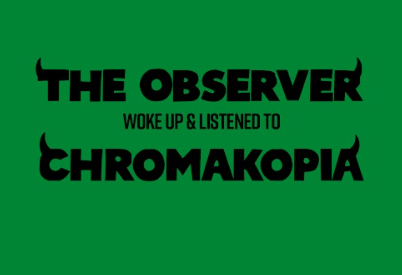Jaguar’s Controversial Redesign: The Pink Batmobile Backlash Explained
The Pink Batmobile: Why Jaguar’s New Design is Stirring Controversy
When it comes to iconic car designs, Jaguar has often been in the spotlight for its stunning aesthetics and high-performance vehicles. However, the recent redesign of one of their models—now often dubbed the “Pink Batmobile”—has sent shockwaves through the automotive community. The reactions range from gleeful admiration to vehement backlash. Let’s dig deep into this captivating controversy that’s not just about a car but also about cultural conversations, marketing strategies, and, dare I say, the essence of automotive branding in the 21st century.
The Unveiling of the Pink Batmobile
When Jaguar rolled out this new design, fans and critics alike were eagerly waiting to see what the luxury brand had in store. The initial buzz was palpable; teasers and sneak peeks had automobile enthusiasts on the edge of their seats. Yet, when the final version was revealed, it quickly became the talk of the town—for all the wrong reasons.
The car features a shiny pink exterior that some are calling bold and innovative, while others view it as completely out of touch with Jaguar’s distinguished heritage. Just think about it—when you hear “Jaguar,” pictures of sleek curves, powerful engines, and, typically, darker, more aggressive colors come to mind. But this? A pink vehicle that looks like something out of a cartoon?
Breaking Down the Backlash
So, why the uproar? Here are a few key factors driving the backlash against Jaguar’s controversial redesign:
-
Cultural Insensitivity: The design has not only raised eyebrows about aesthetics but also about its depiction of femininity. Some critics argue that the choice of a vibrant pink color is infantilizing, and it perpetuates gender stereotypes in a market that has long been criticized for lacking diversity.
-
Alienating Core Customers: Jaguar has a loyal customer base that cherishes the brand for its history, performance, and elegance. When you slap a bright pink coat on a car and call it a Jaguar, it can feel like you’ve just taken a sledgehammer to the brand’s identity. The traditional buyer may feel disconnected and question whether this is a car they want to be associated with.
-
Social Media Fury: Ah, the double-edged sword that is social media! While it allows brands to engage directly with their audience, it also gives a platform for every opinion—be they informed or not. The hashtag #PinkBatmobile exploded, and memes, jokes, and critiques flowed freely. This digital backlash turned what could have been a marketing opportunity into a public relations nightmare.
The Marketing Perspective
From a marketing standpoint, Jaguar’s bold move into colorful territory could have been seen as a strategic attempt to capture a younger, more varied demographic. But did they miss the mark?
Brands will often experiment with new designs and marketing strategies to find the sweet spot that resonates with consumers. However, this roll of the dice doesn’t always pay off. Jaguar might have been trying to tap into the booming trend of personalization in the automotive industry, yet it feels like they veered too far from their core identity.
How Colors Influence Brand Perception
Colors evoke emotions, and the choice of color can significantly influence how a product is perceived. A study by the Institute for Color Research found that 90% of snap judgments about products can be based on color alone. Jaguar’s choice of flamboyant pink probably sounded like a fun, fresh take in the boardroom, but for many, it didn’t gel with what the brand represents.
Think of it this way: if you walked into a luxurious restaurant and saw a bright pink chandelier boasting from the ceiling, your initial thought might be confusion. “Is this fine dining or a children’s party?” you might wonder. Similarly, what is a luxury brand like Jaguar doing draping itself in pink rather than the sophisticated colors that traditionally represent high-end vehicles?
The Cultural Context
The criticism doesn’t only stem from personal preferences; there are deeper cultural issues at play here. In a world striving for gender equality, brands are encouraged, if not required, to approach marketing and design with sensitivity and awareness.
Gender Representation in Design
Automotive advertising has long been dominated by masculine imagery—rugged landscapes, powerful engines, and men behind the wheel. When Jaguar decides to pivot with a design that leans into traditional femininity, is it a progressive step forward or merely tokenism? Some believe it’s a genuine effort to diversify, while others see it as a lost opportunity to promote inclusivity without falling back on archaic stereotypes.
Imagine if Jaguar had chosen a more neutral, sophisticated shade that could appeal across gender lines while also showcasing the car’s aerodynamic lines and powerful features. This alternative could have sparked dialogue rather than controversy.
The Ripple Effects
The backlash against the Pink Batmobile isn’t just immediate—it can have long-lasting implications for Jaguar.
-
Future Design Choices: Once a brand takes a misstep, it often reassesses how they approach future designs. Jaguar might find itself more cautious, impacting creativity.
-
Consumer Trust: Loyalty isn’t just about product functionality—it’s about shared values and vision. Losing trust can have long-term consequences as consumers might turn to competitors who provide what they visually and culturally resonate with.
-
Impact on Sales: Depending on how Jaguar addresses this backlash—whether through further designs or public relations—it could directly affect sales figures. Car buyers want to invest in brands they understand and relate to.
Conclusion
Jaguar’s new pink design has sparked more than just aesthetic disagreements; it has opened a Pandora’s box of conversations about branding, cultural understanding, gender representation, and consumer loyalty. While some might hail the daring move as innovative, the backlash reveals an underlying dissatisfaction with how brands engage with their audiences now more than ever.
As consumers, we have a responsibility to engage with products that resonate with us on multiple levels, urging brands to evolve while holding onto their core values. The verdict? It seems that, in the case of the Pink Batmobile, Jaguar might need to rethink its strategy—and perhaps opt for some shades in between.
FAQs
1. Why did Jaguar choose a pink color for their car?
Jaguar aimed to target a younger demographic and challenge traditional automotive design norms, but the choice has been met with significant backlash.
2. What are the cultural implications of the new design?
The design has initiated conversations about gender representation, as many see the bright pink as perpetuating stereotypes in the automotive industry.
3. How does color affect consumer perceptions?
Color can evoke specific emotions and sentiments, influencing how customers perceive a brand and its products.
4. What can Jaguar do to recover from this backlash?
Jaguar can focus on engaging with its audience, refining its design strategies, and possibly launching PR campaigns to realign its brand identity.
5. What does this controversy say about modern branding?
It underscores the importance of cultural sensitivity, consumer engagement, and the need for brands to adapt while still respecting their heritage.







